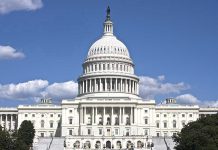
Four lives lost in a single Montana evening have sent shock waves through both political and personal worlds, leaving voters and families grasping for answers as the investigation unfolds.
Story Snapshot
- Illinois GOP candidate Darren Bailey faces unimaginable personal tragedy amid his campaign.
- Helicopter crash claims Bailey’s son, daughter-in-law, and two grandchildren in southeast Montana.
- National Transportation Safety Board launches investigation; cause remains unknown.
- Political and aviation communities re-examine safety and campaign dynamics in the aftermath.
The Tragedy That Altered a Campaign’s Course
October 22, 2025, marked a point of no return for Illinois gubernatorial candidate Darren Bailey. A Robinson R66 helicopter carrying his son, daughter-in-law, and two grandchildren crashed in rural southeast Montana, cutting short the lives of four innocent family members. Bailey, a former U.S. Senator and stalwart conservative, was thrust from hopeful candidate to grieving father, his campaign efforts suddenly eclipsed by devastating loss. Montana authorities and the NTSB responded swiftly, but their arrival could not undo the irreversible.
Bailey’s campaign confirmed the tragedy the following day, urging the public and press to respect the family’s privacy. The timing—deep into the 2025 election cycle—amplified the story’s reach. Bailey’s personal heartbreak became a statewide headline, raising urgent questions about the intersection of public service and private vulnerability. The NTSB’s investigation began immediately, combing through wreckage and flight data, but the cause of the crash remains elusive, compounding the anguish of unanswered questions.
Behind the Headlines: Who Is Darren Bailey?
Darren Bailey’s path to politics was shaped by steadfast conservative values and a record of public service. Known statewide for his principled stances, Bailey’s campaign emphasized individual liberty, local control, and family. The loss of his son and grandchildren in such tragic circumstances struck at the heart of those values, transforming his candidacy from policy-driven to profoundly personal. Supporters rallied, offering condolences, while opponents suspended criticism, recognizing the gravity of Bailey’s grief. Campaign operations slowed as Bailey and his team reevaluated priorities and sought solace.
Bailey’s story is not unique in American politics, where public figures sometimes face private calamities under a relentless spotlight. Yet the scale of his loss—two generations lost in an instant—set this tragedy apart, prompting reflection throughout Illinois and beyond. The crash’s impact rippled outward, touching not only Bailey’s campaign but also the broader Republican party, local communities in Montana, and families nationwide who saw echoes of their own vulnerabilities in Bailey’s ordeal.
The Robinson R66: Aviation Safety in the Spotlight
The Robinson R66 helicopter, widely regarded for reliability, became central to the investigation. Aviation experts acknowledged its generally strong safety record but cautioned that no aircraft is immune to fatal mishaps. The NTSB’s role is to cut through speculation, establishing facts and, if possible, preventing future tragedies through detailed analysis. The crash site’s rural location complicated recovery efforts, yet investigators pressed forward, seeking mechanical clues and weather data that might explain the catastrophe.
Historical precedents abound for aviation accidents involving political figures, from senators to governors, often sparking public debate on private aircraft safety. In Bailey’s case, the incident reignited calls for regulatory review and renewed scrutiny of flight protocols for families of public servants. For some, the crash raised uncomfortable questions: Should candidates and officials take extra precautions during campaign seasons? Are there gaps in oversight that make such tragedies more likely? The NTSB’s findings, still pending, may shape future policy discussions as well as personal decisions for those in public life.
Political Fallout and Personal Recovery
Bailey’s campaign, once defined by energetic outreach and policy debate, entered a period of quiet uncertainty. Advisors weighed the costs and benefits of continuing, knowing that voters would judge not only Bailey’s platform but his resilience in the face of heartbreak. Public sympathy poured in from across the political spectrum, offering Bailey space to grieve and reflect. The Illinois GOP, too, braced for shifts in momentum, aware that tragedies can both galvanize and destabilize campaigns.
The crash’s long-term impact remains an open question. Bailey’s personal recovery will take precedence, with campaign activities likely scaled back or suspended. Political analysts anticipate shifts in race dynamics, as rivals and allies recalibrate strategies. Yet the story’s deeper resonance lies in its stark reminder: even those in public service are not insulated from the random blows of fate. Bailey’s loss, felt deeply by family, friends, and supporters, will leave a mark not only on the Illinois gubernatorial race but on the wider conversation about safety, vulnerability, and the unpredictable intersection of public duty and private life.
Sources:
4 Members of Illinois Politician’s Family Are Killed in Helicopter Crash







